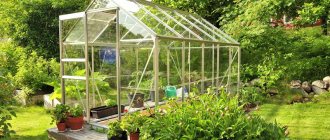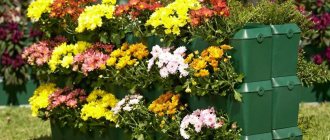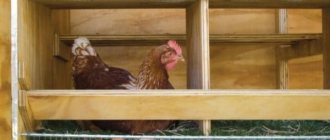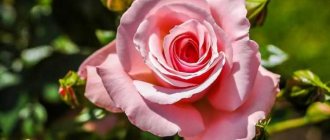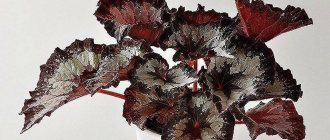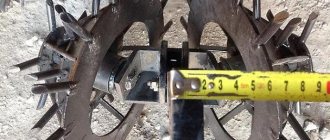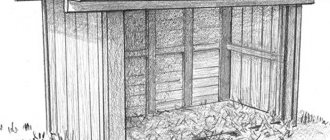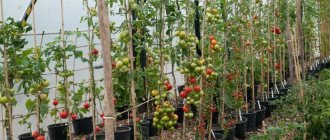Fountain of ideas
Creative people are first inspired by an idea when they set out to create a miniature garden. Sometimes there are many ideas, but it is important to decide on one of them. First, you should think about what composition you want to see in the pot. Only by clearly defining the project for the future mini-kindergarten does it make sense to begin its implementation.
Typically, a garden is conventionally divided into zones - for planting plants, a pond and placing decorations. With a little effort, the beautiful finish turns it into a work of art.
Looking for an idea
“Very often, an author’s mini garden is a collection of exotic plants, which not everyone can afford to purchase.”
The passion for miniature gardening begins with an unbridled desire to have a piece of real wildlife at home. Having scoured the Internet, you were probably impressed by what you saw and are now scrolling through your head about how you could improve this or that picture to make the kindergarten even nicer and more attractive.
A piece of real wildlife
Before you settle on any option, think about whether you can actually implement it? Very often, an author’s mini garden is a collection of exotic plants, which not everyone can afford to purchase. Perhaps it makes sense for you to focus on something simpler and recreate the landscape of the Mexican desert or a small copy of a rock garden, where the varieties and varieties of green spaces available in the house or dacha can be used?
The birth of beauty
A clay pot, bowl, or ceramic flowerpot is suitable for work. And a prerequisite is that there must be a drainage hole at the bottom where water flows. You should immediately determine where the mini-kindergarten will be located, there are many such places:
- veranda;
- garden center;
- main path;
- porch;
- balcony;
- alcove.
The selection of sun-loving or shade-tolerant plants depends on this. It is important to protect the potted garden from drafts and wind. For the winter it is brought into the house.
One pot harmoniously combines spruce, miniature ficus and blooming daisies, daffodils and violas. Decor of elves, angels, and other catchy elements emphasize the beauty of flowers
Indispensable stones
Decorating a composition will not be complete without stones. They are used to lay out paths and make fences. Pebbles, smooth sea pebbles, crushed stone, and gravel are most often used.
Small pebbles of various shapes are suitable for creating steps in a pot, finishing the outer walls of a well, a swimming pool, or framing a pond. They line the bottom of the reservoir.
A good option for using pebbles for space. An area with stones divides the space into floral, rocky and green parts, adding completeness to the picture.
Garden decor
You can decorate a miniature garden with a variety of small-sized objects. Suitable figures include animal and bird figures, small dolls, colorful beetles, and butterflies. These characters will enliven the composition and will be a bright accent among the greenery of the plants.
Figures of men, birds, sea creatures, shells and colored pebbles help to embody a marine theme in the flowerpot. Plants remind you of the colorful underwater world
A garden in a pot with houses, castles, grottoes, and arches looks original. You can make them yourself, or it is better to purchase them from aquarium equipment in a store.
The castle on the upper tier completes the composition. The resulting cascade is effective due to the decorative properties of succulents. The decor nicely sets off the restrained color of the composition
Decorative elements can be found among souvenirs. There are angels, fairies, and white figurines.
Necessary decorative elements:
- colored beads;
- shells;
- sea pebbles;
- miniature dishes;
- furniture for baby dolls;
- toy garden tools;
- tiny lanterns;
- garden benches;
- tables;
- arches
Sand for different needs
A miniature garden cannot be created without sand. Mixed with humus, it forms the basis of soil for planting cacti and succulents. Coarse sand is sometimes placed on top of the drainage. External decoration of compositions cannot be done without it. Moreover, colored sand is often used for decoration.
A sandy area with a summer cafe near a pond evokes a vacation mood. Using sand is practical and not expensive. It serves as a bright background for decorative elements
Before using sand for the substrate, it must be calcined in the oven and then cooled.
Garden with pond
The potted arrangement will become more attractive if its central place is allocated to a miniature pond. It’s easy to create, the main thing is to find a low container, you need to “drown” it a little into the soil, line the bottom of the pond with colored pebbles or regular pebbles.
The edges of such a reservoir look beautiful, decorated with colored tiles, flat stones, and shells. Low plants planted around will add to its attractiveness.
A sandy area with a summer cafe near a pond evokes a vacation mood. Using sand is practical and not expensive. It serves as a bright background for decorative elements
The pond framed by pebbles looks picturesque against the backdrop of green creeping plants. In many small gardens, ponds occupy a central place
Plant diversity
The choice of the floral part of the composition is approached especially responsibly. A variety of plants should take root together. When choosing them for planting, you need to take into account how much they love the sun, how sensitive they are to shade, and how unpretentious they are.
The combination of decorative and flowering plants looks impressive in one flowerpot. You need to select them so that together they are not afraid of sunlight or shady places
Succulents and cacti are ideal; they look great and take root easily. The most suitable succulents are:
- Echeveria;
- sedum;
- stone rose;
- sedum;
- abrometella;
- pachypodium;
- diamondsmith;
- Lithops.
Cacti and succulents look natural among rocks, which help maintain moisture in the soil. In addition, they are very unpretentious in care. The main thing is to provide them with a place in the sun
Succulents alternate with small ornamental plants; they should fit harmoniously into the structure of a tiny garden. The best:
- soleiromia;
- saxifrage;
- Glexin;
- nertera;
- tradescantia;
- miniature ivy;
- pachyphytum;
- dwarf ficus;
- sphagnum moss.
When planting, take into account that succulents and cacti love bright sun.
To create a garden in a small container, choose plants that grow slowly. As they grow, their height is adjusted by pinching them.
Mosses and small plants tightly covering the soil imitate grass in a potted garden. Without them, the composition is less expressive and attractive. This grass provides a more natural surface than regular soil.
Suitable plants for a mini-garden
When choosing plants for a mini-garden, it is worth remembering that they will differ from the flower bed. All elements that grow too rapidly will have to be removed or cut off, and doing this is extremely unpleasant. Therefore, it is recommended to give preference to plants that grow slowly and feel great.
- Gelksina - this plant can create enough greenery for the entire pot, “revitalizing” the remaining components.
- Pachyphytum - thanks to its thick, interestingly shaped leaves, it will add more exoticism to your composition. It can be beautifully used in a small garden designed in a Mediterranean style.
- Gasteria , young - they perfectly complement each other in one garden and will bring more brightness and other elements into it. Plant roots can easily penetrate any cracks, so they can thrive on rocky soil.
- Money tree , myrtle - will add more complexity to the design and make it special. Thanks to the decorative shape of the crown, these plants will make the garden look more majestic.
- Dwarf varieties of conifers are suitable if you are going to keep the garden outside. For example, the use of decorative cypress or juniper, or dwarf spruce will become relevant.
- Sedums - these plants are loved by many summer residents due to their ability to enliven the composition with their small stems.
- Fittonia , despite its small flowering, thanks to a wide variety of colors, will make your garden more diverse.
- Ivy - the overall appearance of the garden will become more interesting due to its unusual shapes and types. For example, a plant can either spread along the ground or entwine a tray or pot.
Each of the plants will help create an interesting overall composition, and your site will be unique.
Creating a composition
Pots and containers for the composition are chosen to be wide in diameter so that many elements can fit. In this case, the height of the flowerpot should be from 10 to 20 cm, otherwise the plants may not take root.
Before filling the pot with flower soil, you need to take care of drainage - be sure to lay pebbles, crushed stone or expanded clay on the bottom. The drainage height is no more than 4 cm. Only then can you fill the container with the substrate, taking care of the density of the layer. The soil is placed a few centimeters below the edge of the pot.
Before planting the plants in the pot, you need to add vermiculite to the soil. It is visible in the soil in the form of white particles. This substrate will help make the soil light and loose
The design of a future miniature garden should immediately include all types of plants that are planned for planting. Each of them needs a corresponding flower soil. To do this, places in the pot are determined for different types of soil, then they are separated by laying paths of pebbles.
Paths of small stones are laid after planting flowers; this method of zoning a garden is convenient. If it is necessary to replace one flower with another, it is easier to determine the boundaries of different substrates in a flowerpot
After planting the plants, they create a pond, steps, houses, and place decorative elements.
Is it worth breaking pots?
This is the case when filled flowerpots will come in handy. They are suitable for an unusual multi-tiered composition. A potted garden with a missing side is created using a cascade method. The broken parts of the flowerpot are used for “storying” and steps. After filling with soil, suitable plants are planted on each tier and decorated with decorative items. Small pots with plants are placed at different levels.
Succulents and mosses take root well on different tiers of the composition in a broken pot. At the top you can plant more whimsical types of flowers
Stylish gardens
When creating a composition, you first select a design style. There are many such styles. For a harmonious perception of a garden in a pot, you need to strictly adhere to a certain style direction.
English sophistication
A miniature garden in the English style suggests closeness to the natural landscape with hills and ponds. From a house or castle, entwined with plants, there are paths made of stones. Mandatory elements are wooden garden benches, arches, and fountains. All this can be made with your own hands using planks, wire, polymer clay.
A fragment of an English park can be easily reproduced in a flowerpot. There is a lot of shady greenery, in which lonely benches and arches entwined with ivy or small roses are lost. The main thing for this style is the naturalness of nature plus decor
Japanese spirituality
A composition in the Japanese style is characterized by an asymmetrical arrangement of individual elements - a house, a gazebo, a tall tree. Plants, large stones and water are the philosophical basis of the Japanese garden. It would be appropriate to use mosses. Wooden bridges, gazebos, lanterns and houses with flat roofs, picket fences, fences can be easily made from available materials - planks, toothpicks. A restrained color scheme of plants and decor is encouraged.
A typical Japanese garden with a lack of symmetry when planting and an emphasis on a large specimen of a conventional tree. Stones and mosses add an oriental flavor to the picture
Country style
Here you will need simple things for decoration. Preference is given to rough wooden benches, wells, clay dishes, wheelbarrows, watering cans, ladders, wicker baskets - all attributes of discreet rural life. The picture will be complemented by figures of domestic animals - horses, goats, chickens, geese.
Wooden benches and stools, as if knocked together from logs, buckets, watering cans, garden stairs against the backdrop of sand embody rural life. The green area, pushed to the edge of the pot, leaves space for household work
French charm
The alley in the center of the composition with green lawns and parterres of plants is distinguished by the French style. Graceful garden benches, arches, sculptures and a fountain will add sophistication. They can be created with your own hands. A table with tea accessories under the crowns of plants will bring home comfort and lightness.
Wooden benches and stools, as if knocked together from logs, buckets, watering cans, garden stairs against the backdrop of sand embody rural life. The green area, pushed to the edge of the pot, leaves space for household work
Shabby Chic - aged beauty
An attractive style with white objects, deliberately aged, creates an unusual space in the pot. Among the plants are light benches, small architectural forms, arches with scuffs, a house of the same type, a round table with a lace tablecloth. Here's what you need to decorate.
A Taste of the Wild West
This is where cacti and succulents come in. Recreating the Wild West in a pot is a tempting idea. It's easy to implement. We need a wooden house, a stable, a picket fence, and benches. Everything is made from planks, twigs, toothpicks. Clay dishes and horse figurines, harnesses.
The abundance of different types of cacti is characteristic of a style solution in the spirit of the Wild West. Rock figures are truly exotic, harmoniously complementing the landscape
You need to think about the flower planting scheme in advance. Round-shaped succulents can be left in small pots, where they feel better; decorative species are planted in the ground, keeping a distance
Where to set up a mini garden
To become the owner of a wonderful diva, you don’t have to look for a suitable pot. Garden improvisation can be arranged in any container with a height of more than 10 cm. For fastidious plants, larger volumes may be needed, but for succulents the minimum is always enough. What can you use from scrap materials?
1. pallets of any type;
2. containers;
3. old sinks;
4. large-volume plastic bottle;
5. old bowl.
Mini garden in an old sink
It all depends on the assortment of selected plants and what you want to see in the decor of the landscape.
It should be noted that sometimes the mini garden in a broken pot shown in the photo, assembled by an amateur with his own hands, gives odds to the work of seasoned professionals.
Mini garden in a broken pot
Whatever you choose as a container for planting, remember one thing: you should provide high-quality drainage. This is especially important for compositions that are planned to be displayed outdoors on balconies or cottages. Without good drainage, the soil will quickly silt, plant roots will rot, and your work will go to waste.
Don't be put off by the unsightliness of your chosen container. You can always decorate it to your own taste. For this there are paints, stones, rhinestones, beads, natural materials, and, of course, buttons, shards of dishes and broken mirrors. Glue or a specific peat-cement-sand mixture will help to attach them to the containers.
Pot decor for a mini garden
